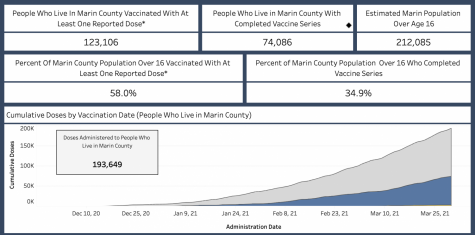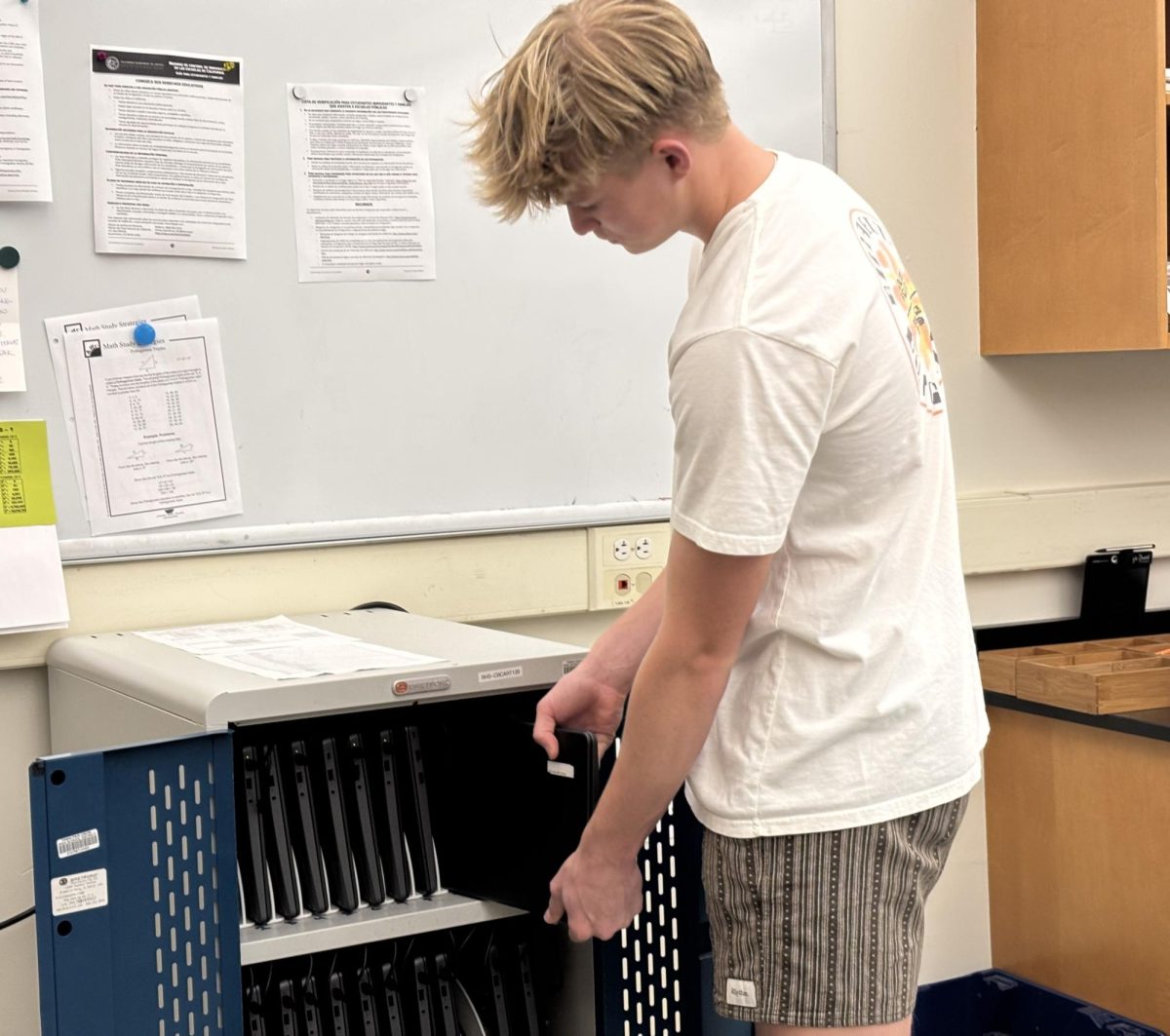Ever since the national COVID-19 vaccine rollout began in December of 2020, Marin’s distribution has been swift and successful. As of March 25, Marin is the third leading California county in terms of dispensation and has administered 123,106 doses to roughly 58.8 percent of the population over 16 years of age. So far, the majority of doses distributed by the county have been the two-dose Moderna and Pfizer-BioNTech vaccines.
As stated by public health director Matt Willis, the local inoculation effort will soon be accelerated by the addition of a third, one-dose, vaccine option. According to a March 6 statement by Willis, a shipment of 1,000 single-dose Johnson & Johnson vaccines will arrive in the next three weeks, along with large quantities of the other two. Willis hopes that the arrival of the one-dose vaccine will speed up the vaccination process in Marin.
While the rollouts continue, Marin is working to put a special emphasis on making the process fair and helping communities who have been disproportionately affected by the pandemic. Benita McLarin, the director of Marin Health and Human Services (HHS), explains that the county has started an advisory board for distribution, and carved out doses to be distributed in vulnerable communities, such as San Rafael’s Canal District.

“Here in Marin, our number one focus is making sure that we have an equitable response and that we don’t have communities who may normally get left behind, get left behind. We are[constantly] asking ourselves the question, ‘What else can we do to make sure that our most vulnerable communities have access to the vaccine?’” McLarin said.
This equitable response includes the establishment of mobile vaccination centers, and endeavors to open up more sites, run by the government and private companies, around the county. On Feb. 21, Marin opened a drive-through point of dispensing (POD) site in the Larkspur Landing ferry terminal. Willis, a driving force in the opening, explained in a Marin Country press release issued in mid-February, shortly before the launch of the POD, that the drive-through facet makes it much easier for the county to quickly and safely distribute the vaccine outdoors.
“Providing a vaccination location that is accessible by personal vehicle, paratransit and public transit options is an important factor in removing barriers to the vaccine, ensuring health equity for our most vulnerable residents,” Willis said.
Junior Georgia Larsen was recently vaccinated at the Larkspur site. Larsen qualified for the vaccine through her food service job at Swirl, a frozen yogurt shop in Fairfax. Originally, she was unsure about getting vaccinated before middle-aged people who did not have the same qualifications. But, after weighing the risks she takes each day, she booked an appointment.
“I feel like people with autoimmune disorders or pre-existing conditions should be getting it before [me]. But I think just because of the place I work in, and [because of the fact] that anyone could be a carrier, the tiers are pretty well set,” Larsen said.

The vaccine in Marin is currently available to those in Marin in tier 1A and 1B, groups that include residents of long-term care facilities, healthcare workers, those 65 and older, those 16-64 with severe, high-risk medical conditions or significant, high-risk disabilities and those who work in education and childcare, food service and agriculture, emergency services, congregate living or transportation and logistics.
While directors in Marin, such as McLarin, feel prepared to move onto lower tiers and vaccinate the general public, the process has been held back due to a shortage of vaccines.
“There’s no question that if we had more vaccines, we could give out more vaccines, but we’re not unique. I think that’s the case throughout the state and throughout the country. There’s just not enough vaccines coming out of Pfizer, Moderna or Johnson & Johnson,” McLarin said.
McLarin and her team at HHS are prepared and excited to continue and complete the distribution process, and urge everyone who is eligible to wait their turn and get the vaccine.
“We’ll work. We’ll do what it takes to get it out there. If it means going 24 hours a day, we’ll do it,” McLarin said. “We have a lot of committed people who are really willing to do the hard work to make sure that the vaccine gets out as soon as we can.”





